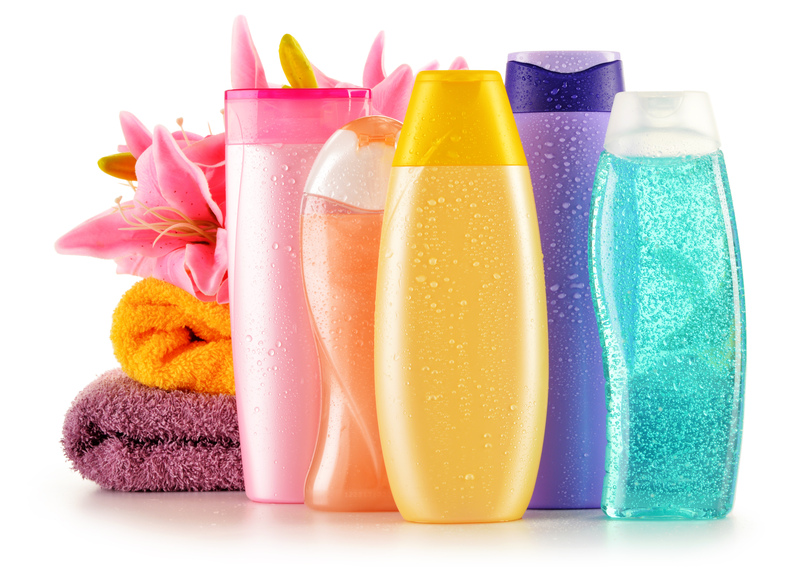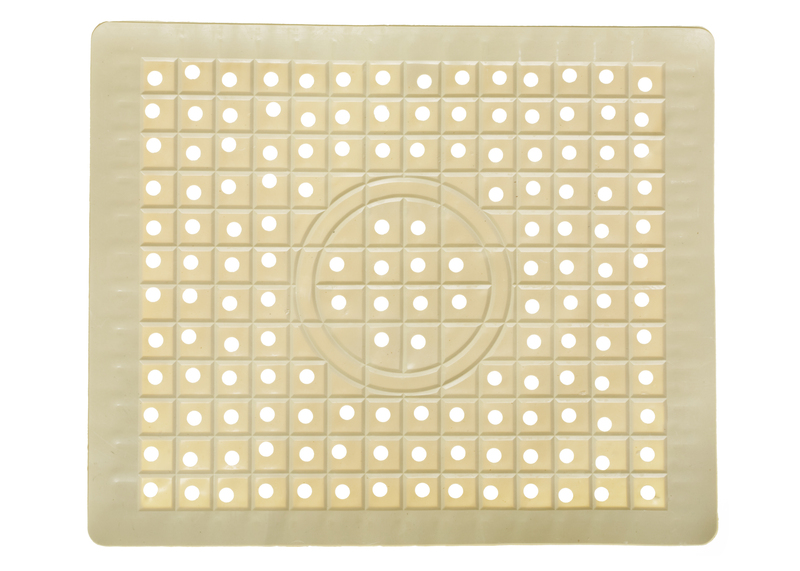Revamp Your Windows: Eliminating Mould from Sills
Posted on 24/09/2025
Revamp Your Windows: Eliminating Mould from Sills
Are your windowsills plagued by unsightly mould? Mouldy window sills are a common nuisance for homeowners and renters alike. Not only do they ruin the appearance of your windows, but mould can also pose serious health risks and damage your property. If you're seeking ways to eliminate mould from window sills and prevent it from coming back, you've come to the right place! In this detailed guide, we'll walk you through understanding, removing, and preventing window sill mould so you can revamp your windows and create a healthier home environment.
Understanding Window Sill Mould
Before diving into mould removal techniques, it's crucial to understand why mould appears on window sills in the first place. Mould is a type of fungus that thrives in moist, humid, and poorly ventilated areas. Windowsills--often exposed to condensation, spills, or leaks--are the perfect breeding ground for mould spores.
Why Does Mould Grow on Window Sills?
- Condensation: During colder seasons, warm indoor air meets cold window glass, resulting in water droplets accumulating on the panes and sills.
- Poor Ventilation: Limited airflow around windows allows excess moisture to remain, giving spores the environment they need.
- Leaky Windows: Cracked seals or frame damage can let rainwater in, increasing the chance for mould growth.
- Organic Material: Dust, dirt, and even wood make ideal food sources for mould.
Ignoring window sill mould isn't just an aesthetic issue--it can compromise indoor air quality and trigger health problems like allergies, asthma, and respiratory infections. Taking prompt action is key to maintaining both your property's integrity and your family's wellbeing.

Essential Safety Precautions for Mould Removal
Before you eliminate black mould from your window sills, it's vital to protect yourself. Some types of mould release potentially harmful spores, so follow these safety guidelines:
- Wear rubber gloves to avoid contact with mould and cleaning chemicals.
- Use a mask or respirator to prevent inhaling airborne spores.
- Open windows or use fans for proper ventilation while cleaning.
- Wear old clothes that can be washed immediately after cleaning.
- Keep pets and kids away from the area during mould removal.
For severe infestations or extensive black mould, consider consulting a professional mould remediation service to ensure safe, thorough cleaning.
Step-by-Step Guide to Removing Mould from Window Sills
Ready to restore your mouldy window sill to its former glory? Follow these proven steps to remove mould and revamp your windows:
What You'll Need
- Protective gloves and mask
- Microfiber cloths or sponges
- Bucket of warm water
- Mild detergent or soap
- White vinegar or hydrogen peroxide (as natural alternatives)
- Baking soda
- Stiff-bristled brush (for stubborn patches)
- Spray bottle
- Disposable towels or paper towels
1. Remove Loose Debris and Dust
Begin by vacuuming or dusting the windowsill to eliminate cobwebs, dirt, and loose mould. This step preps the surface for deeper cleaning and avoids spreading spores.
2. Prepare a Cleaning Solution
You can use either a commercial mould remover or an effective home remedy:
- Mild Detergent Solution: Mix a few drops of dishwashing liquid in a bucket of warm water. This is suitable for light mould and general cleaning.
- White Vinegar: Pour undiluted white vinegar into a spray bottle for a natural, anti-fungal cleaner. Vinegar kills up to 82% of mould species.
- Hydrogen Peroxide (3%): Spray directly onto mould for a chemical-free, anti-microbial solution. Let it sit for 10 minutes before scrubbing.
- Baking Soda Paste: Mix baking soda and water for sticky, stubborn spots--baking soda removes the odour and helps lift stains.
3. Apply and Scrub
Liberally apply your chosen mould remover to the affected area. Let it sit for 5-10 minutes to dissolve and kill spores. Then, use a stiff brush or sponge to scrub the window sill, targeting all nooks and crannies. Take care not to damage painted surfaces.
4. Rinse and Wipe Away Residue
Wipe down the sill with a clean, damp cloth to remove loosened mould and residues. If necessary, repeat the process for stubborn spots. Dry thoroughly with a paper towel or microfibre cloth--remember, moisture is mould's best friend!
5. Prevent Recontamination
Dispose of all used towels and cleaning cloths. Launder your cleaning attire immediately after the process to prevent spreading spores elsewhere in the house.
Natural Solutions for Mould Removal
Mould removal doesn't always require harsh chemicals. Natural remedies for window sill mould are gentle on both you and the environment, yet just as effective as store-bought solutions. Here are some classic options:
- Distilled White Vinegar: Spray and leave on the surface. For tough patches, repeat the process or scrub lightly.
- Baking Soda Paste: Make a thick paste, apply, let it sit, then scrub and rinse.
- Tea Tree Oil: Mix 1 teaspoon in 1 cup water, spray, and leave to air dry. Tea tree oil is a powerful natural fungicide.
- Lemon Juice: With mild bleaching properties, fresh lemon juice can both clean and deodorise.
These solutions are excellent for families with kids, pets, or allergy sufferers who wish to avoid chemical exposure.
How to Eliminate Stubborn Mould Stains on Window Sills
Sometimes, even after cleaning, you may notice lingering black stains on your window sills. These can be difficult to remove, especially on porous surfaces like wood. Consider these spot treatment solutions:
- Sand and Refinish Wooden Sills: If the stain persists, lightly sand the effected area and refinish the sill with paint or sealant.
- Bleach Solution: Use a diluted bleach mixture (1 part bleach to 3 parts water) for persistent stains on non-porous surfaces like metal or vinyl. Always test first, and rinse thoroughly.
- Commercial Removers: For tough stains that don't budge, a specialised mould stain remover may be needed.
Always wear gloves when handling bleach and ensure the area is well-ventilated.
Preventing Future Mould Growth on Window Sills
Once you've eradicated the immediate threat, it's just as important to guard against recurrence. Embrace these mould prevention tips for window sills:
- Fix Leaks: Regularly check and repair any leaking windows, roof, or gutter issues to prevent water infiltration.
- Enhance Ventilation: Keep windows open when possible. Use exhaust fans in kitchens and bathrooms to whisk away humidity.
- Reduce Indoor Humidity: Use a dehumidifier, especially in damp rooms or during rainy seasons.
- Install Double-Glazed Windows: These energy-efficient windows lessen condensation and help maintain a consistent indoor temperature.
- Wipe Down Window Sills Regularly: A quick, weekly wipe to dry surfaces can prevent moisture buildup.
- Keep Window Tracks Clean: Remove dust, dirt, and organic matter that sustains mould.
- Paint or Seal Wooden Sills: Protective sealant creates a barrier against moisture and mould spores.
Regular Maintenance Pays Off
Vigilance is crucial. Take a few minutes each week to inspect your windowsills. Catch mould early, and you'll spend less time cleaning and more time enjoying a bright, healthy view.
When to Call the Professionals
While DIY methods succeed in most cases, sometimes mould infestations on window sills are too extreme or keep reappearing. When you should call the experts:
- Mould covers a large area (greater than 1 metre square)
- Persistent musty odours despite cleaning
- Structural damage such as rot or crumbling wood
- Recurrent health symptoms in family members
Professional mould technicians have the equipment and expertise to eliminate deep-rooted mould, assess for hidden sources, and prevent further outbreaks.

Frequently Asked Questions about Eliminating Mould from Window Sills
Does vinegar kill mould on window sills?
Yes! White vinegar is a powerful, natural option that kills most varieties of household mould. Spray undiluted vinegar onto the sill, leave for an hour, then scrub and wipe away residue.
Is it safe to use bleach to remove mould from a window sill?
Bleach is effective on non-porous surfaces like plastic, glass, or tile, but may not completely eradicate spores in porous materials such as wood. Always rinse thoroughly and use with caution.
How can I stop condensation on my windows?
Condensation is best prevented by:
- Improving ventilation (open windows, use fans)
- Running a dehumidifier
- Insulating windows (double glazing)
Can mould on window sills make you sick?
Yes, particularly for those with allergies or respiratory issues. Mould spores can aggravate asthma, trigger allergic reactions, and cause eye, nose, or throat irritation.
Conclusion: Breathe Easy with Sparkling Clean Window Sills
Eliminating mould from your window sills is more than a cosmetic upgrade--it's an investment in your home's health and value. Revamping your windows by removing mould improves air quality, prevents property damage, and beautifies your living space.
Remember, prevention is better than cure. Keep sills clean and dry, fix leaks promptly, and ensure good airflow throughout your home. If mould keeps returning, don't hesitate to consult a professional. With a little diligence, your windows will be cleaner, brighter, and completely free of mould!
*Ready to revamp your windows and eliminate mould from window sills?* Start today, and enjoy the benefits of a healthier, mould-free home.





